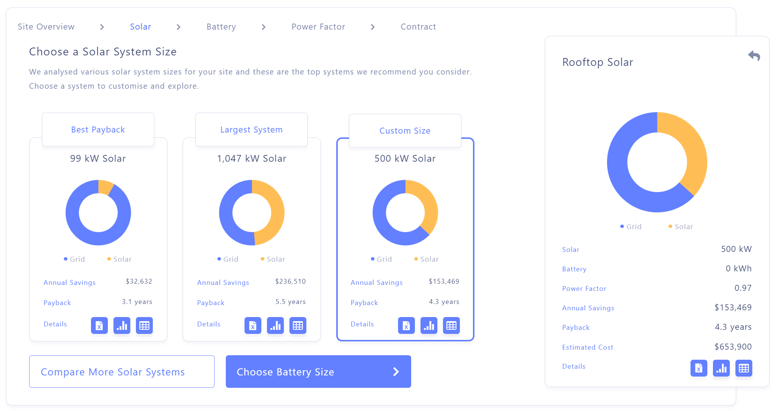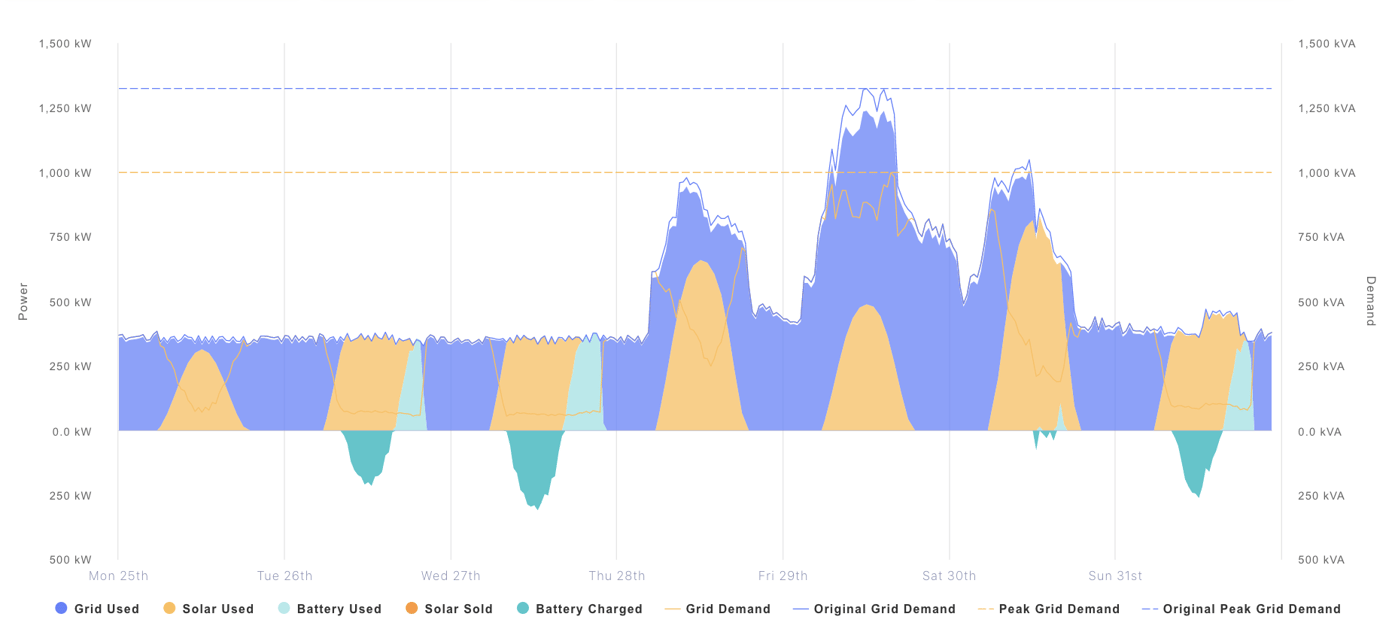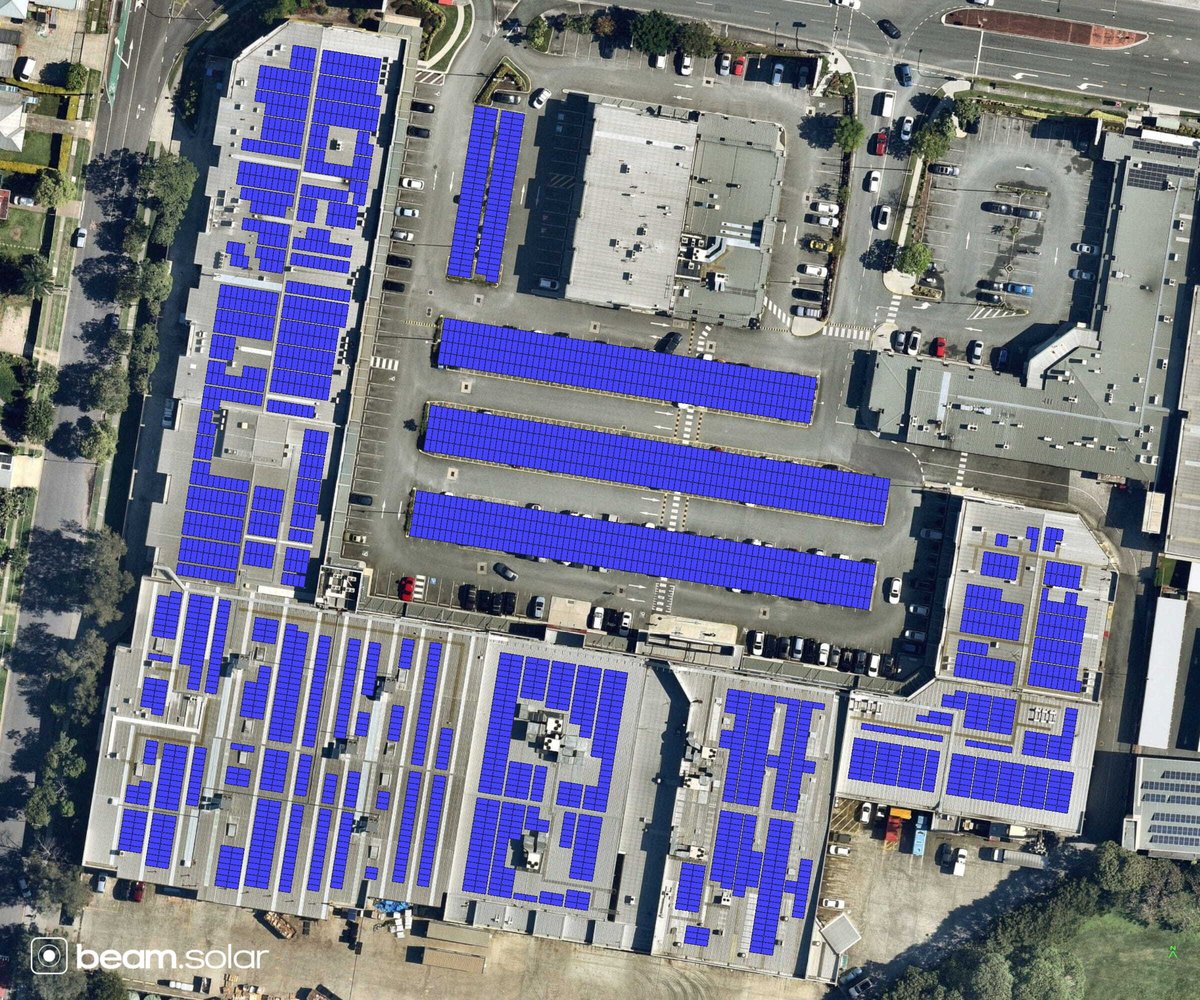Assess
Combining electricity data, local weather-station feeds and satellite imagery, we help you calculate the optimum solar and battery combination for your site.

What is a Beam Assessment?
When you run an Assessment on the Beam Platform we use a combination of electricity data from your energy retailer, local weather-station data and satellite imagery to simulate hundreds of solar and battery combinations on an hourly basis for a year.
Our simulations calculates the capital cost, annual savings, emissions reduction and ongoing financial return from each combination, enabling us to find the optimal renewable energy system for your site.
Parameter #1: How much solar could we fit at your site?
One of the first questions we need to answer is how many solar panels we can physically fit on your site and how they could be mounted. It often makes the most economical and environmental sense to build rooftop solar in Australia. However there are many sites without a usable or large enough roof space so the panels will need to be mounted on purpose-built racking. We might also want to maximise your output by tracking the sun or even build carpark or floating solar.
We build a dataset of potential solar configurations that looks something like this:
| Field Segment | Array Size | Tilt | Azimuth | Array Type |
| North building roof 1 | 261 | 7 | 28 | Rooftop (Flush Mounted) |
| North building roof 2 | 220 | 7 | 208 | Rooftop (Flush Mounted) |
| South building roof 1 | 80 | 7 | 28 | Rooftop (Flush Mounted) |
| South building roof 2 | 80 | 7 | 208 | Rooftop (Flush Mounted) |
| Ground area | 800 | 0 | 0 | Single Axis Tracing |
| Main car park 1 | 145 | 15 | 118 | Carpark Shade |
| Main car park 2 | 145 | 15 | 298 | Carpark Shade |
We automate the process wherever possible, using large datasets of buildings and addresses combined with estimation algorithms, or one of our solar engineers maps the site by hand.
Parameter #2: How much power does your site need?

Parameter #3: How much will your project cost?
Parameter #4: How much power will the panels generate?
Parameter #5: How much does your electricity cost from the grid?

Putting it all together



Assess Pricing
We use your energy and bill data, weather-station data and satellite imagery to find the optimal solar, battery and electrification system.
Beam Self Assessment
Assessment of solar, batteries and PFC.
- Automated maximum solar size
- Predicted energy profile or upload interval data
- Detailed energy charges and tariffs
- Solar, battery and PFC assessment
- Online, PDF reports and business case
Desktop Assessment
Assessment of solar, batteries and PFC.
- Includes everything in Free
- Bespoke layout of solar arrays
- Rooftop, Ground and Carpark solar modelled
- Up to 10 assessments per site included
- Multiyear analysis and cashflow projection
Site Feasibility Assessment
Electrical, structural & financial feasibility.
- Includes everything in Free and Premium
- Site electrical inspection (connection points, cabling and inverter locations)
- Structural inspection and installation assessment
- Feasibility report with financial modelling
Assess Pricing
Standard
Free
Desktop assessment of solar, batteries and PFC.
Start here to understand your options.
-
Automated roof solar sizing
-
Detailed energy charges and tariffs
-
Predicted Energy Profile or Interval Data
-
Solar, battery and PFC assessment
-
Online, PDF Report and Business Case
Detailed
$4,000
Financial, electrical and structural assessment.
Recommended for final investment decision.
-
Site electrical inspection + system design
-
Grid connection enquiry (exc. DNSP fees)
-
Structural roof assessment
-
Detailed solar layout and shading analysis
-
25-year discounted cashflow analysis
Feasibility
Custom
Detailed financial and technical feasibility.
For large battery, off-grid or new build projects.
-
Projected energy consumption modelling
-
Off-grid, diesel and biogas generator
-
Analysis of electrification of thermal loads
-
Sensitivity and scenario analysis
-
Technical feasibility report

